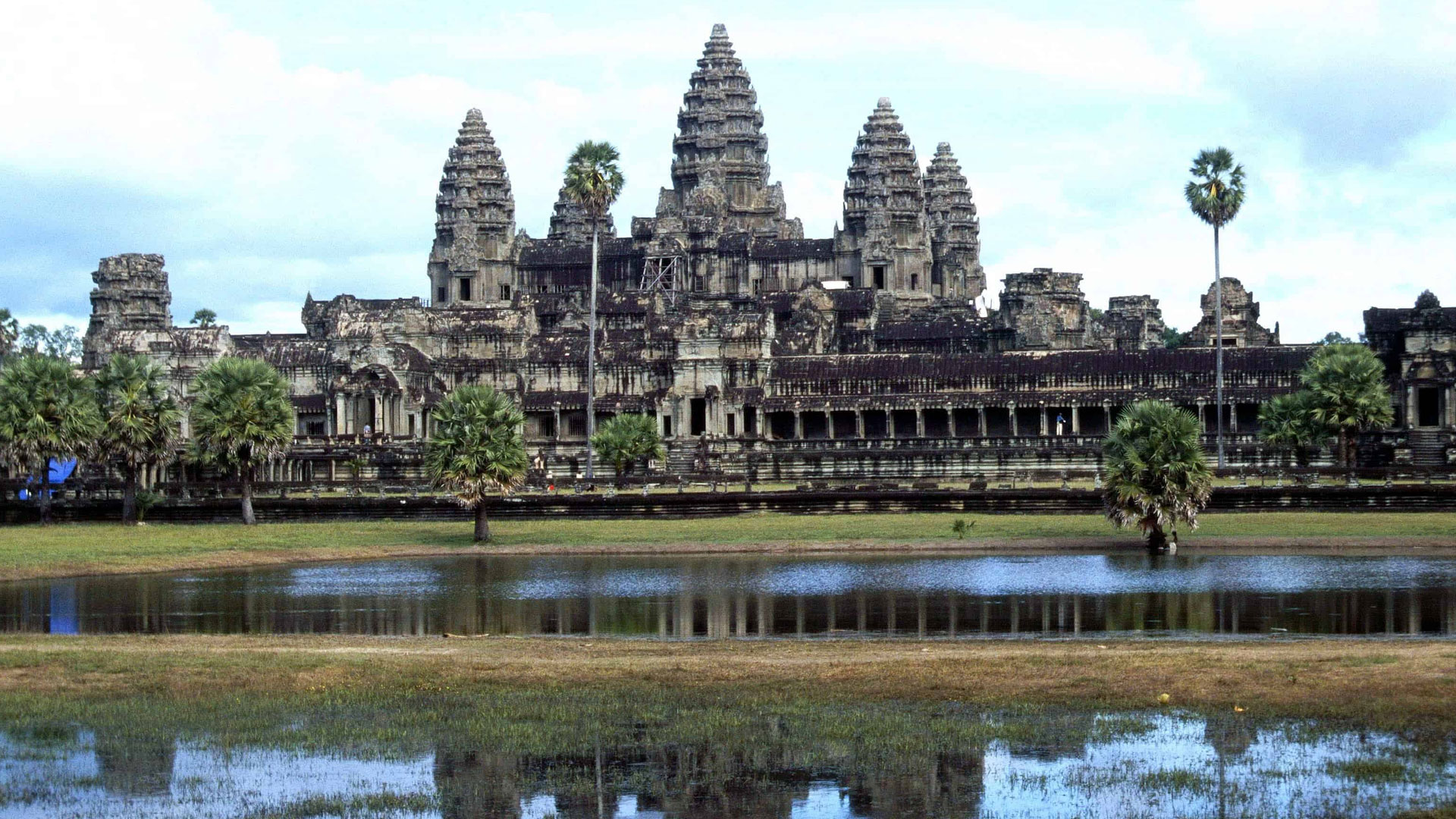
Sightseeing and Cultural Heritage
Cambodia's UNESCO World Heritage Sites are a testament to the country's rich history and vibrant culture. The iconic Angkor Temple Complex is a must-see for anyone interested in experiencing Cambodian identity, while the lesser-known Preah Vihear Temple in Preah Vihear province is quickly gaining recognition as another top cultural attraction. With both sites offering unique insights into Cambodia's past, visitors are sure to have a rewarding experience exploring these remarkable landmarks.
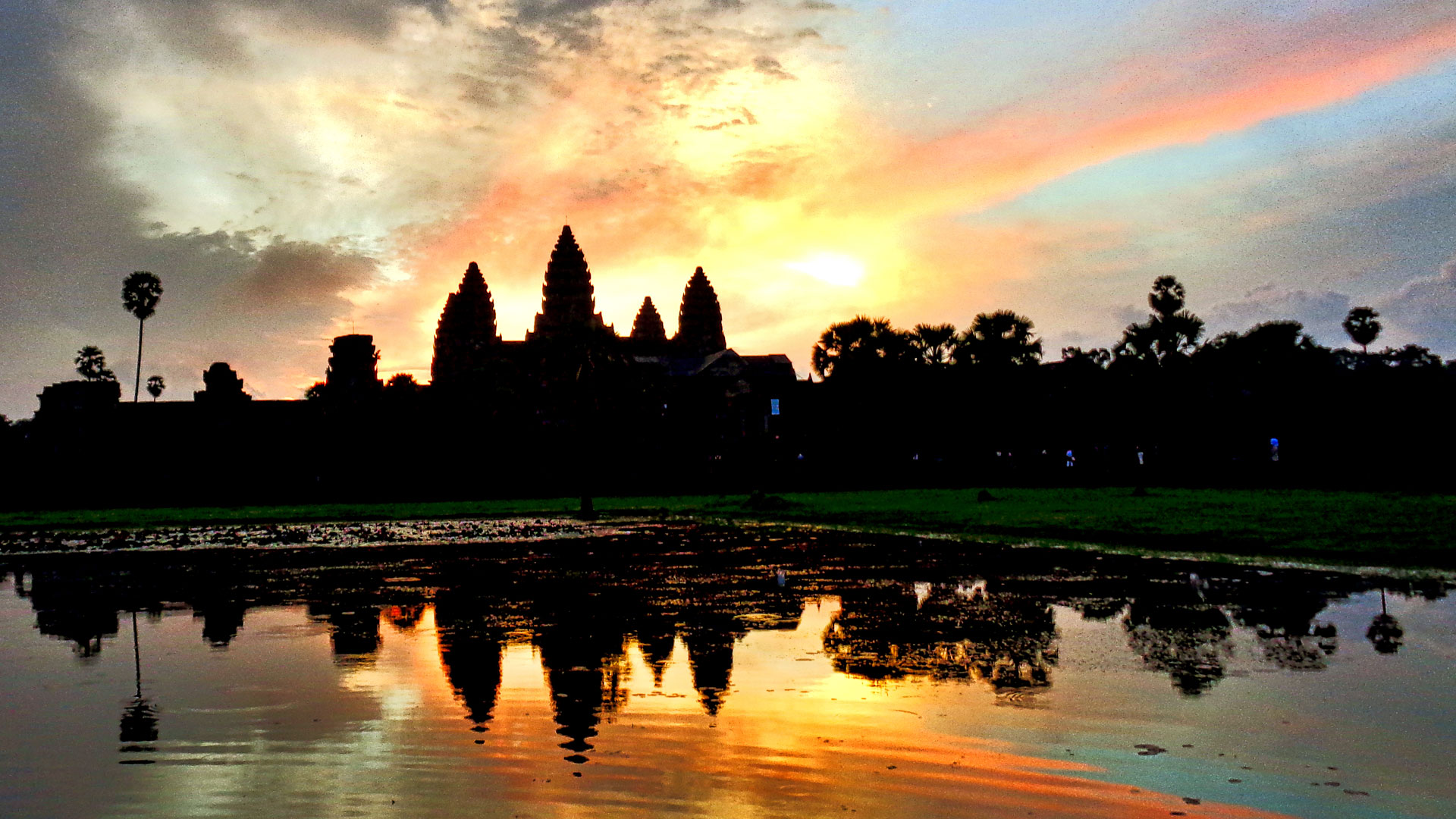
In addition to those mentioned, there are several other sights and cultural heritage sites that are definitely worth a visit when traveling to Cambodia, including:
The Royal Palace, Phnom Penh The Royal Palace in Phnom Penh is a stunning example of Khmer architecture, with intricate carvings and colorful decorations. It's home to the current king of Cambodia, and visitors can explore the palace's many buildings and gardens.
Angkor Wat, Siem Reap Angkor Wat is perhaps Cambodia's most famous attraction, and for good reason. This ancient temple complex dates back to the 12th century and is a testament to the incredible architectural and engineering skills of the Khmer people. Visitors can explore the temple's many chambers and galleries, and witness stunning views of the surrounding jungle.
The Killing Fields, Phnom Penh The Killing Fields are a sobering reminder of Cambodia's dark past, but they are also an important part of the country's history. The site was used as a mass grave for victims of the Khmer Rouge regime, and visitors can explore the various memorials and exhibits to learn about this tragic period in Cambodia's history.
Bayon Temple, Siem Reap The Bayon Temple is another must-see attraction in Siem Reap. This temple is known for its many towers, each of which is adorned with a giant face. Visitors can explore the temple's many galleries and courtyards, and marvel at the intricate carvings and bas-reliefs.
Banteay Srei, Siem Reap Banteay Srei is a smaller temple complex located just outside of Siem Reap. It's known for its intricate pink sandstone carvings, which are among the most beautiful in all of Cambodia. Visitors can explore the temple's many chambers and galleries, and witness the incredible skill and artistry of the Khmer people.
These are just a few of the many cultural attractions in Cambodia. Whether you're interested in history, architecture, or art, there's something for everyone in this fascinating country.
Natural Beauty and Adventure
Cambodia's natural beauty is just as impressive as its cultural heritage. From waterfalls and lakes to jungles and beaches, there are plenty of natural attractions for travelers to explore. Additionally, adventure seekers will find a wide range of activities to keep them busy, from trekking and cycling to boating and diving.
Tonle Sap Lake
Tonle Sap Lake, also known as Boeung Tonle Sap, is a magnificent freshwater lake located approximately 15 km south of Siem Reap town. It boasts one of the world's most vibrant ecosystems and is home to a diverse array of fish and bird species. Visitors can take an express boat from Siem Reap to Phnom Penh, crossing the lake and docking at the village of Chong Khneas. However, this journey is recommended during the Monsoon season, as in the dry season the boat may get stuck in the mud due to low water levels. There are various options for exploring the culture and wildlife of the lake area, depending on your interests and the amount of time you have. In addition to providing a rich habitat for wildlife, the Tonle Sap and the inland waters system in Cambodia support approximately 500,000 tons of fish annually. Furthermore, the flooded forests surrounding the lake help to purify water and provide a buffer against storms, which is becoming increasingly important as climate change makes extreme weather events more frequent.
Waterfalls
Cambodia is home to many beautiful waterfalls that are worth visiting! Here are some of the most popular ones:
- Ka Choung Waterfall
- Bousra Waterfall
- Tatai Waterfall
- Kbal Spean
- Phnom Kulen National Park
These waterfalls are perfect for a refreshing dip after a long day of sightseeing or hiking.
Trekking and Cycling
Cambodia has several scenic trekking and cycling routes that take visitors through lush jungles and rolling countryside.
Jungle trekking in Cambodia is a must-do activity. With a plethora of options available, such as Bokor Mountain in Kampot, Kirirom National Park in the south, or Kulen Promtep Wildlife Sanctuary to the north, there's something for every level of hiker. For those seeking an immersive experience in the wild, Banlung in Ratanakiri Province or the Cardamom Mountains in the southwest, which includes Botum Sakor National Park, are the best choices. Ratanakiri boasts the most diverse trails, ranging from beginner to advanced levels, offering the best hiking experience in Cambodia. The province is also home to the largest park in Southeast Asia, making it a must-visit destination for nature lovers.
Cambodia is an inspiring destination for a cycling tour holiday. The country's breathtaking landscapes and warm, welcoming people will leave a lasting impression on your journey. Rediscover ancient wonders and explore rural villages on your adventure through Cambodia. With mountains, plains, and coastline to discover, every road and settlement offers awe-inspiring experiences.
One of the country's most revered sites, Angkor Wat, is a must-see on your cycling journey. The temple complex is a symbol of Cambodia's rich history and culture. Cycling is the perfect way to experience the beauty and wonder of Angkor Wat from a unique perspective.
Your cycling adventure in Cambodia grants you access to the country's hidden secrets. Pedal through narrow dirt paths in the jungle surrounding Angkor Wat or cycle the Silk Islands of Phnom Penh for a glimpse of local village industries. For those seeking a challenge, ride up the Kulen Mountain ranges to see a stunning waterfall or trek to the UNESCO World Heritage Preah Vihear at the base of the Dangrek Mountains.
Overall, cycling in Cambodia allows you to discover the country's best-kept secrets and experience its unique scenery and culture. You won't forget the unforgettable moments and beautiful scenery that await on your cycling adventure in Cambodia.
Boating
Cambodia offers cruising and boating experiences for travelers. However, it's important to keep a few tips in mind when considering a boat tour. The dry season, from March to May, can make boat tours challenging, so it's best to avoid that period. Additionally, it's important to clarify your expectations for the tour, including lunch, destinations, and prices, before boarding the boat. It's also wise to avoid poorly maintained boats. During peak season, boat tours may be overbooked or crowded with tourists, so it's important to plan ahead. Cambodia's many rivers and waterways make it a popular destination for boating and kayaking. Visitors can take a relaxing boat tour along the Mekong River or explore the picturesque waterways around Kampot.
Scuba Diving and Snorkeling
Cambodia's beach scene was once dominated by Sihanoukville, but the town has since transformed into a bustling resort surrounded by towering buildings and casinos. Despite this, many people are unaware of Cambodia's stunning snorkeling and diving spots. The country boasts unexplored marine paradises and a diverse range of fish species, from tiny seahorses to giant whale sharks. Popular snorkeling spots in Sihanoukville include Independence, Otres, and Ochheuteal beaches, as well as the nearby islands such as Koh Rong.
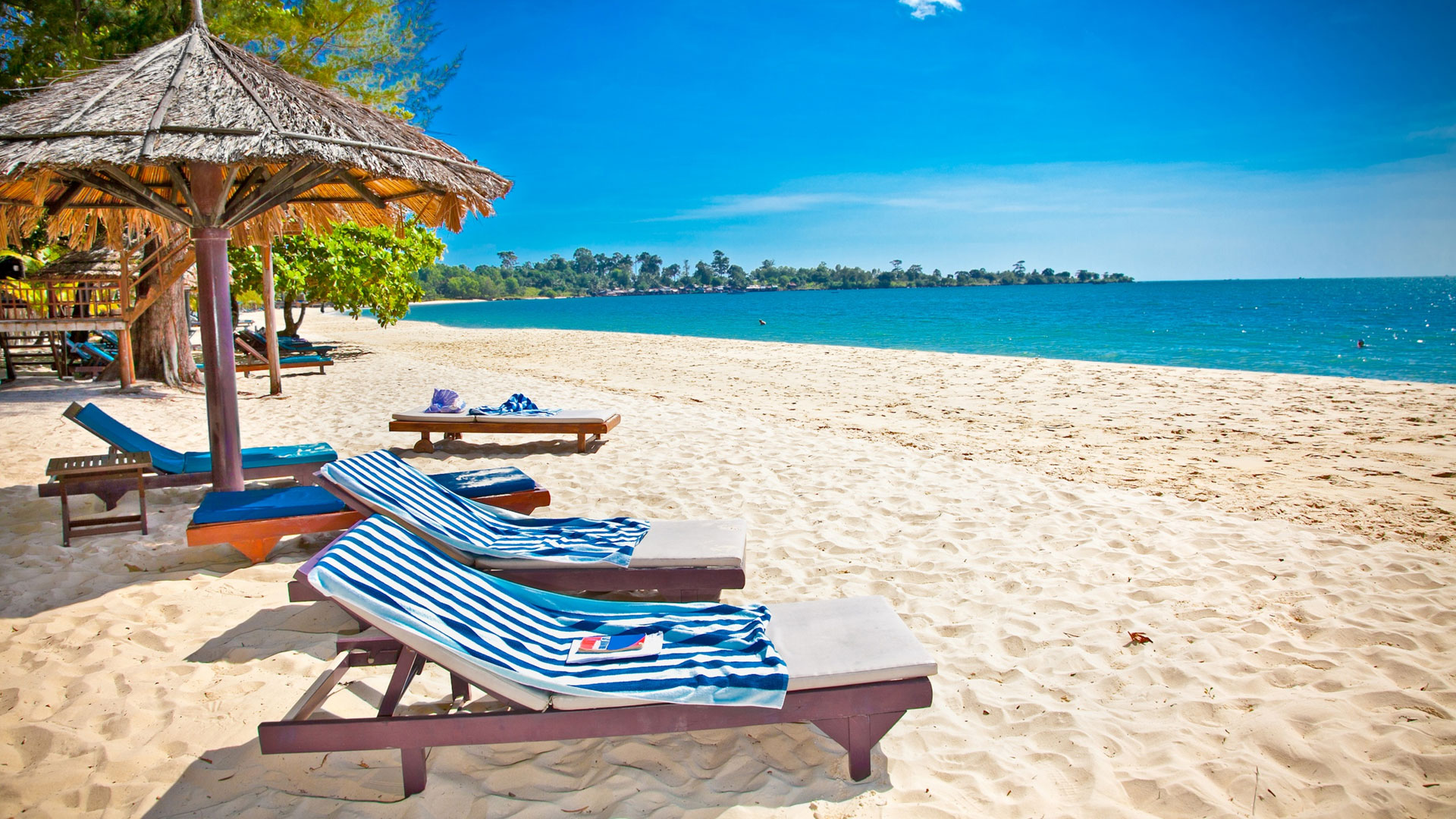
For scuba diving enthusiasts, Cambodia has a wealth of diving sites, including the Koh Sdach Archipelago, Koh Rong Samloem, Koh Tang, Koh Kon, Condor Reef, Koh Prins, Koh Rong, and Koang Kang. Koh Kon, located between Koh Rong and Koh Rong Samloem, is a particularly unique and thrilling dive site. The best time for diving is from late October to the end of June, but good diving can still be had in the off-season months.
Ziplining
For thrill-seekers, ziplining is an exciting way to explore Cambodia's natural beauty. The Flight of the Gibbon zipline in Angkor is one of the most popular, offering visitors a bird's eye view of the jungle canopy and a chance to see gibbons up close.
The Angkor Zipline, formerly known as Flight of the Gibbon, offers the only zip lining experience in Siem Reap. Located within the Angkor Archeological Park, which houses the ancient ruins of Angkor Wat, Angkor Thom, and other iconic temples, this unique adventure is the only zip lining tour in the world to be situated within a UNESCO World Heritage Site.
Here are some of the best places for ziplining in Cambodia:
Angkor Zipline in Siem Reap - This zipline tour takes place within the Angkor Archaeological Park, offering a unique view of the ancient temples and surrounding jungle.
Flight of the Gibbon in Mondulkiri - Located in the remote northeast region of Cambodia, this zipline adventure takes visitors through the dense jungle canopy and over waterfalls.
The Gibbon Experience in Ratanakiri - This zipline tour takes place in the remote forests of Ratanakiri province, offering a unique opportunity to spot wildlife and experience the local culture.
Chi Phat in Koh Kong - This zipline adventure takes visitors through the Cardamom Mountains and over the Preak Piphot River, offering a unique view of the stunning natural scenery.
Koh Rong Zipline on Koh Rong Island - This zipline adventure takes visitors over the treetops and beaches of Koh Rong Island, offering a unique perspective on this popular tourist destination.
Overall, Cambodia's natural beauty and adventure activities provide travelers with an opportunity to get off the beaten path and experience the country's stunning scenery in a unique and memorable way.
Local Cuisine and Nightlife
Cambodian cuisine is a delicious fusion of flavors and influences from neighboring countries like Thailand and Vietnam, as well as the French colonial past. Some of the must-try local dishes include amok, a fragrant and creamy curry made with fish or chicken, and lok lak, a stir-fry dish of beef or pork served with rice and a tangy lime and pepper dipping sauce.
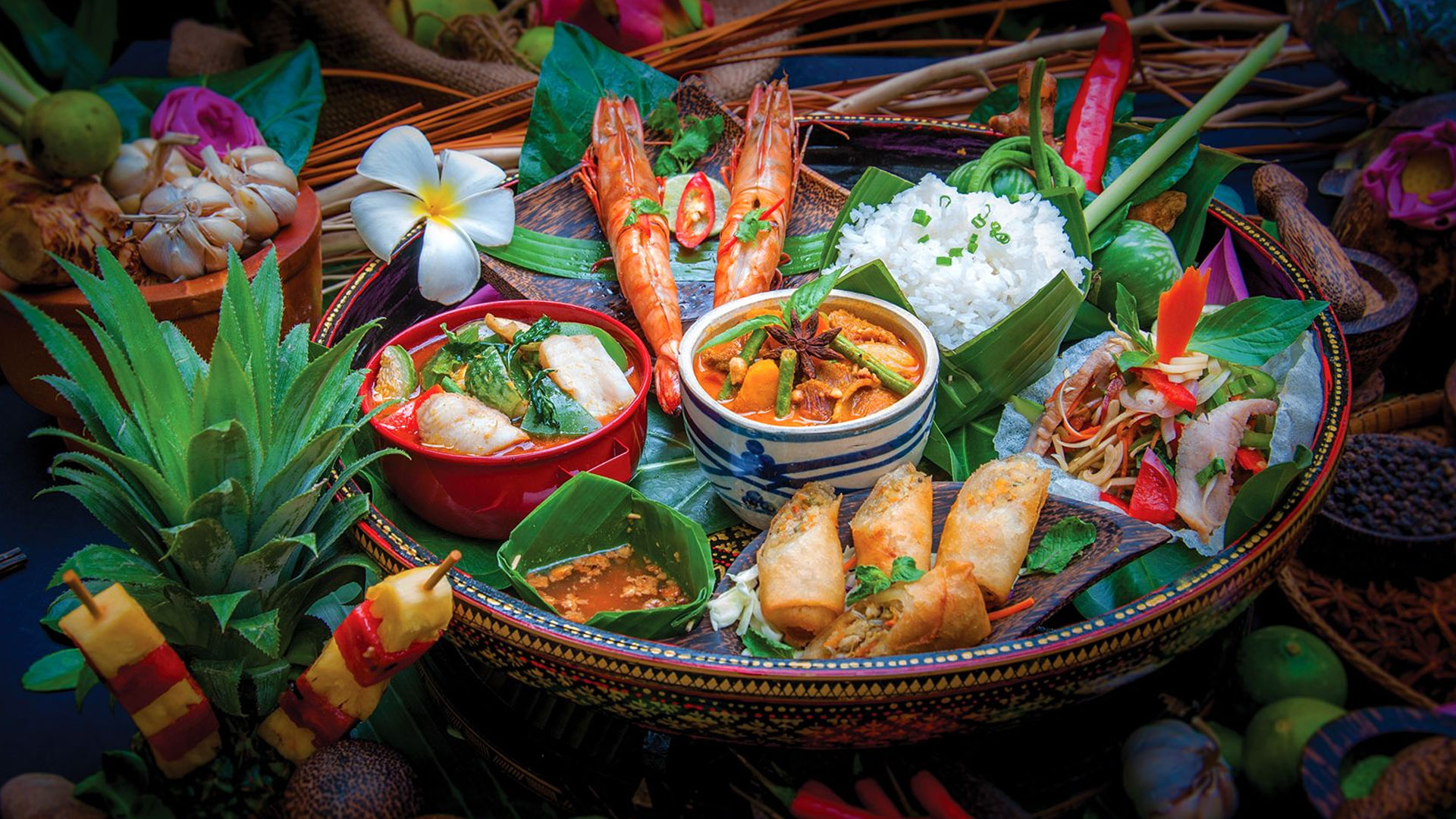
To experience the best of Cambodian cuisine, head to the bustling street markets and food stalls that can be found in almost every town and city. Here, you can sample a variety of street food like grilled meat skewers, crispy spring rolls, and fried noodles. For a more upscale dining experience, check out the trendy restaurants and cafes that are popping up in popular tourist areas like Siem Reap and Phnom Penh.
When it comes to nightlife, Cambodia offers a range of options, from laid-back bars to lively nightclubs. In Siem Reap, you can enjoy a drink at one of the many rooftop bars that offer stunning views of the Angkor temples, or check out the bustling Pub Street, which is lined with bars and restaurants. Phnom Penh also has a vibrant nightlife scene, with a variety of bars, nightclubs, and live music venues.
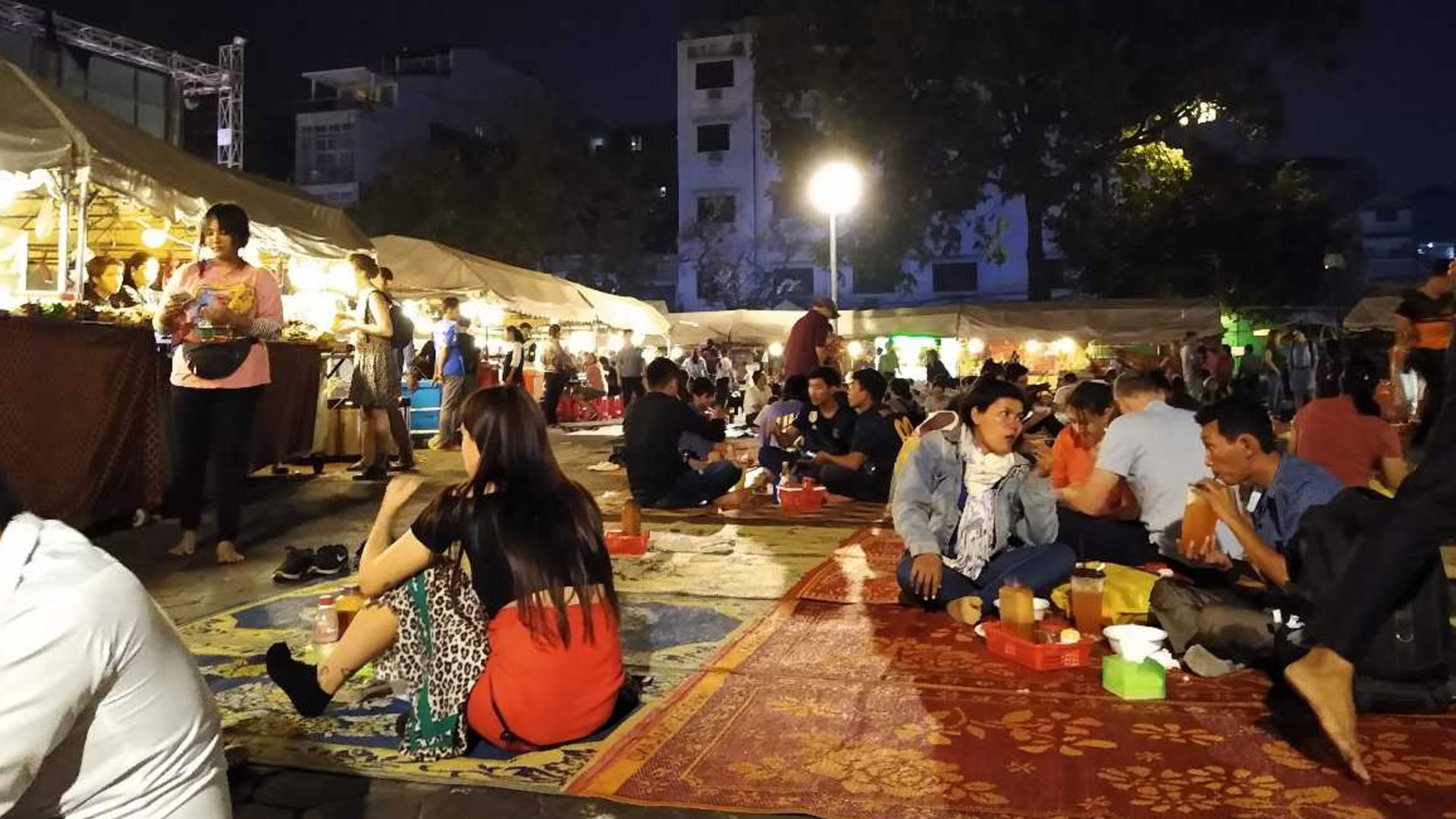
For a unique nightlife experience, consider checking out a traditional Cambodian dance performance, which is often accompanied by a dinner of local cuisine. The Apsara dance, in particular, is a beautiful and graceful performance that tells stories from Cambodian folklore.
Festivals and Celebrations
Cambodia is a country that celebrates a wide range of festivals and events throughout the year, many of which are rooted in its rich cultural heritage. From religious celebrations to secular events, these festivals offer a unique insight into Cambodia's traditions and way of life.
Khmer New Year One of the most important festivals in Cambodia is Khmer New Year, which is celebrated in mid-April. This three-day festival is a time for families to come together and celebrate the new year, with many people traveling to their hometowns to be with their loved ones. During Khmer New Year, you can expect to see lots of dancing, music, and traditional games, as well as the famous water festival, where people douse each other with water to symbolize the washing away of the previous year's sins.
Pchum Ben Pchum Ben, also known as Ancestors' Day, is a Buddhist festival that takes place in late September or early October. During this festival, Cambodians pay their respects to their ancestors by offering food and prayers at temples and pagodas. It's believed that during this time, the spirits of the dead return to earth, and by making offerings to them, the living can help ease their suffering.
Water Festival The Water Festival, also known as Bon Om Touk, is one of the biggest festivals in Cambodia and takes place in November. This three-day festival celebrates the end of the rainy season and the beginning of the fishing season, and features boat races, fireworks, and concerts. The highlight of the festival is the boat races, where teams from all over Cambodia compete in traditional longboats, each decorated with brightly colored dragon heads.
Royal Ploughing Ceremony The Royal Ploughing Ceremony, also known as the Festival of the Plowing Ox, is an ancient royal tradition that takes place in May. During this ceremony, a pair of sacred oxen are used to plow a field and predict the success of the upcoming harvest. Depending on what the oxen eat, the harvest is predicted to be either good or bad. This ceremony is presided over by the King of Cambodia and is seen as an important symbol of the country's agricultural heritage.
These are just a few of the many festivals and celebrations that take place in Cambodia throughout the year. No matter what time of year you visit, there's bound to be something happening that will give you a unique insight into Cambodia's culture and traditions.
Hidden Gems and Must-See Sights
While Cambodia is famous for its iconic temples and bustling cities, the country also has a wealth of off-the-beaten-path destinations that are worth exploring. From charming colonial cities to remote islands, here are some hidden gems and must-see sights in Cambodia that you won't want to miss:
Battambang: This charming colonial city in western Cambodia is known for its well-preserved French architecture, bustling markets, and vibrant arts scene. Take a ride on the famous bamboo train, visit local temples, and explore the surrounding countryside for a glimpse of rural Cambodian life.
Koh Rong: This remote island paradise off the coast of Sihanoukville is known for its pristine beaches, crystal-clear waters, and stunning coral reefs. Spend your days sunbathing, swimming, snorkeling, or diving, and enjoy the laid-back vibe of this tropical paradise.
Preah Vihear: This ancient temple complex in northern Cambodia sits atop a cliff overlooking Thailand and offers breathtaking views of the surrounding landscape. While it's not as well-known as Angkor Wat, it's just as impressive and definitely worth the trek.
Banteay Srei: This smaller temple complex near Angkor Wat is known for its intricate pink sandstone carvings, which are considered some of the finest examples of Khmer art. The site is well-preserved and provides a glimpse into the artistic and religious traditions of the Khmer people.
Mondulkiri: This remote province in eastern Cambodia is known for its stunning natural beauty, including waterfalls, wildlife, and lush forests. Go trekking, bird watching, or elephant riding, and immerse yourself in the peaceful and pristine surroundings.
Kep: This coastal town in southern Cambodia is known for its fresh seafood, stunning sunsets, and French colonial villas. Relax on the beach, explore the nearby national park, or take a boat trip to Rabbit Island for a taste of the laid-back coastal lifestyle.
Tonle Sap Floating Villages: This unique attraction near Siem Reap offers a glimpse into the lives of local fishermen and their families who live on houses built on stilts. Take a boat tour and learn about their daily lives, and observe the local flora and fauna that thrive in the surrounding waterways.
- Sihanoukville:
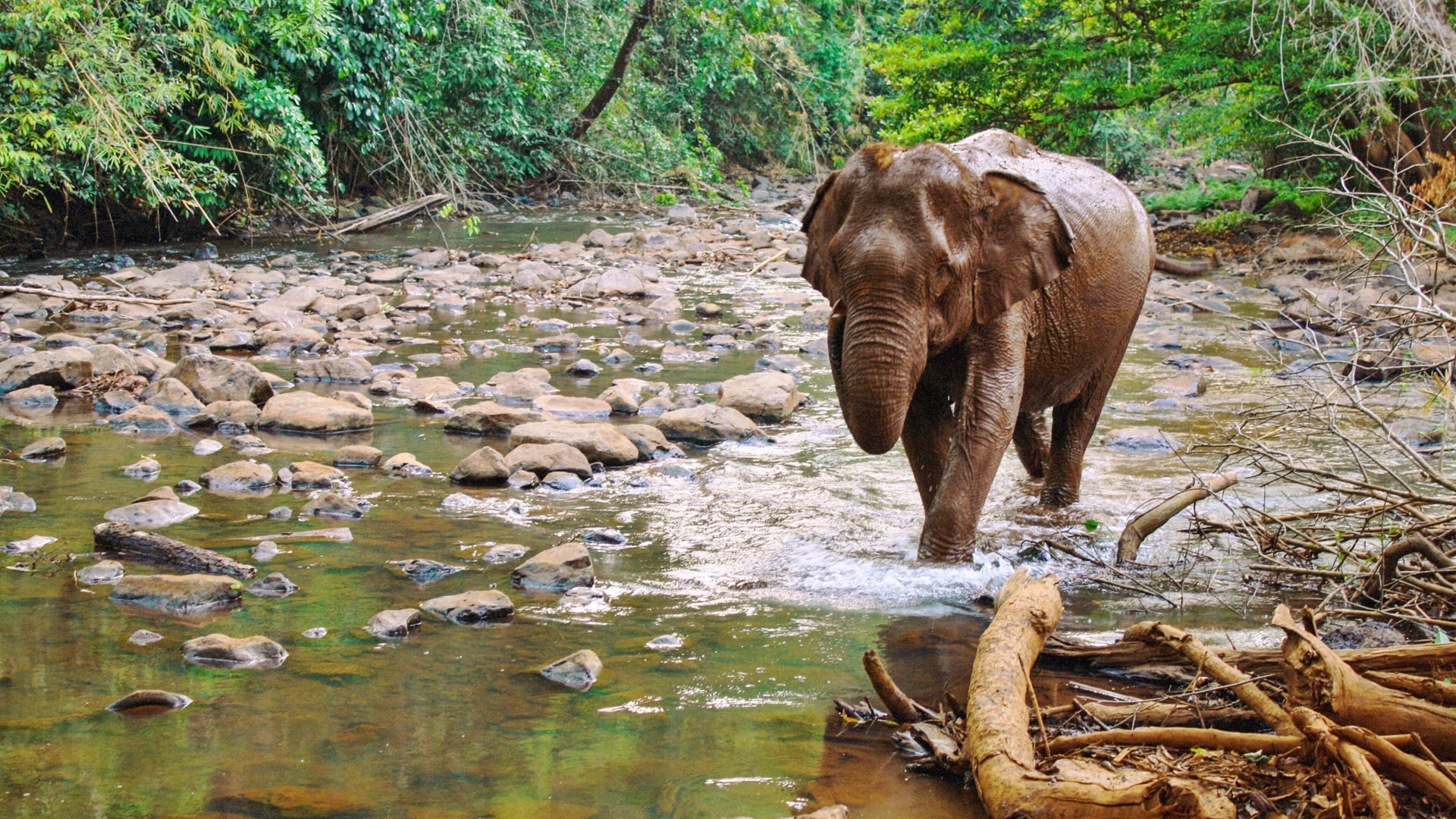
Whether you're interested in exploring ancient ruins, trying new cuisines or simply soaking up the local atmosphere, Cambodia has something for everyone. With over 15 years of Cambodia travel experience we can recommend you hundreds of things for your reference, but above all, we will only introduce you to the top things to do in Cambodia, including must-see attractions, outdoor activities, cultural experiences, and more. Whether you're a first-time visitor or a seasoned traveler, this list will give you all the information you need to plan an unforgettable trip to Cambodia.
Here's a list of 20 of the best things to do in Cambodia:
- Explore the magnificent temples of Angkor Wat
- Visit the Killing Fields and Tuol Sleng Genocide Museum in Phnom Penh
- Go on a river cruise along the Mekong River
- Take a sunset boat tour of Tonle Sap Lake
- Visit the National Museum of Cambodia in Phnom Penh
- Trek through the jungle to the remote temples of Koh Ker
- Take a cooking class and learn how to make traditional Khmer dishes
- Walk along the beaches of Sihanoukville
- Explore the French colonial architecture in Battambang
- Visit the Silk Island and learn about silk production
- Go on a cycling tour through the countryside
- Visit the Bokor Hill Station and explore the abandoned French buildings
- Attend a traditional Apsara dance performance
- Go on a street food tour and sample local delicacies
- Visit the Kampot Pepper Plantations and learn about pepper production
- Go on a wildlife safari in the Cardamom Mountains
- Take a hot air balloon ride over Angkor Wat
- Visit the Koh Ker Temple Complex, home to over 180 sanctuaries
- Explore the countryside and rice fields around Siem Reap
- Relax at a beach resort on the island of Koh Rong
These are just a few of the many amazing things to see and do in Cambodia. With its rich history, culture, and natural beauty, there's something for everyone in this fascinating country.
Practical Information and Tips
In order to make the most of your trip to Cambodia, it's important to have some practical information and tips at hand. From visa requirements and transportation options to health and safety considerations, currency and money matters, and cultural norms, this section will provide you with all the essential information you need to plan a safe and enjoyable trip to Cambodia.
Visa Requirements:
Before you travel to Cambodia, it's important to be aware of the entry requirements for the country. Depending on your nationality, you may need to obtain a visa in advance or upon arrival, and ensure that your passport is valid for a certain period of time beyond your date of entry.- Most visitors to Cambodia require a visa, which can be obtained upon arrival at the airport or at a land border crossing.
- The visa fee is $35 plus a $7 processing fee, for a single-entry visa or $60 for a multiple-entry visa, and can be paid in cash (USD) or by credit card.
- Visitors should have a passport that's valid for at least six months beyond the date of entry.
Getting Around:
- Tuk-tuks are a popular mode of transportation in Cambodia, particularly in cities like Phnom Penh and Siem Reap.
- Taxis and private cars are also available for hire, and can be arranged through hotels or travel agencies.
- Buses are the most common form of public transportation, and are generally safe and reliable.
- Domestic flights are available between major cities, such as Siem Reap and Phnom Penh.
Best Time to Visit:
Cambodia has a tropical climate with distinct wet and dry seasons. The best time to visit Cambodia depends on your preferences and travel plans. If you want to avoid the crowds and enjoy cooler temperatures, the dry season from November to February is the best time to visit. However, if you don't mind some rain and want to experience Cambodia's lush landscapes, the wet season from May to October can be a great time to visit.- Cambodia has a tropical climate, with a rainy season from May to October and a dry season from November to April.
- The best time to visit Cambodia is during the dry season, when temperatures are cooler and there's less chance of rain.
- However, the dry season is also the busiest time for tourism, so expect larger crowds and higher prices.
Health and Safety:
Traveling to a new country can be an exciting and rewarding experience, but it's important to prioritize your health and safety while on the road. Cambodia is a relatively safe country for travelers, but there are some health and safety considerations to keep in mind.
- Visitors should be up-to-date on routine vaccinations, such as measles, mumps, and rubella (MMR), as well as hepatitis A and B.
- Malaria is a risk in some parts of Cambodia, particularly during the rainy season, so travelers should take precautions to avoid mosquito bites and consider taking anti-malarial medication.
- Cambodia is generally a safe country for travelers, but it's important to take precautions to avoid theft and other crimes, particularly in urban areas.
Currency and Money Matters:
Understanding the currency and money matters in Cambodia is important for any traveler planning a trip to the country. While the official currency is the Cambodian riel, US dollars are widely accepted, and knowing how to navigate the local currency and banking system can help you get the most out of your trip- The official currency of Cambodia is the Cambodian riel (KHR), but US dollars are widely accepted and sometimes preferred.
- ATMs are available in major cities, but may not be available in more remote areas.
- Credit cards are accepted at some hotels and restaurants, but cash is generally preferred for smaller purchases.
Other Tips:
- Learning a few basic phrases in Khmer, the official language of Cambodia, can go a long way in communicating with locals and showing respect for their culture.
- Dress modestly when visiting temples and other religious sites, covering shoulders and knees.
- Bargaining is common in markets and with tuk-tuk drivers, but it's important to be respectful and not engage in aggressive haggling.
Conclusion
In conclusion, Cambodia is a country that's rich in history, culture, and natural beauty, making it a must-visit destination for travelers in 2026. Whether you're exploring the magnificent temples of Angkor Wat, trekking through the lush jungles, lounging on the tropical beaches, or sampling the delicious local cuisine, there's no shortage of things to see and do in this fascinating country.
We hope that this comprehensive guide has provided you with valuable information and inspiration for planning your trip to Cambodia. Remember to prioritize your itinerary based on your personal interests and travel style, and be sure to leave room for serendipitous discoveries and unexpected adventures.
When visiting Cambodia, it's important to be respectful of the local culture and to travel responsibly. Support local businesses and communities by staying in eco-friendly accommodations, shopping at local markets, and hiring local guides whenever possible. Take the time to learn about Cambodia's history and cultural traditions, and be mindful of local customs and etiquette.
With all of that said, we wish you the best of luck in planning your trip to Cambodia and hope that your travels are filled with unforgettable experiences, stunning scenery, and enriching cultural encounters. Whether you're a solo traveler, a couple, or a family, Cambodia is sure to capture your heart and leave you with memories that will last a lifetime. So what are you waiting for? Start planning your trip today!
At Cambodia Tours, we understand that planning a trip can be overwhelming, especially to a country as diverse and rich as Cambodia. That's why our team of experts, with many years of experience working in Cambodia tourism, are here to help you every step of the way. From creating custom itineraries to arranging transportation and accommodations, we'll take care of all the details so you can relax and enjoy your Cambodia trip to the fullest. Trust us to help you make the most of your time in Cambodia and create memories that will last a lifetime.